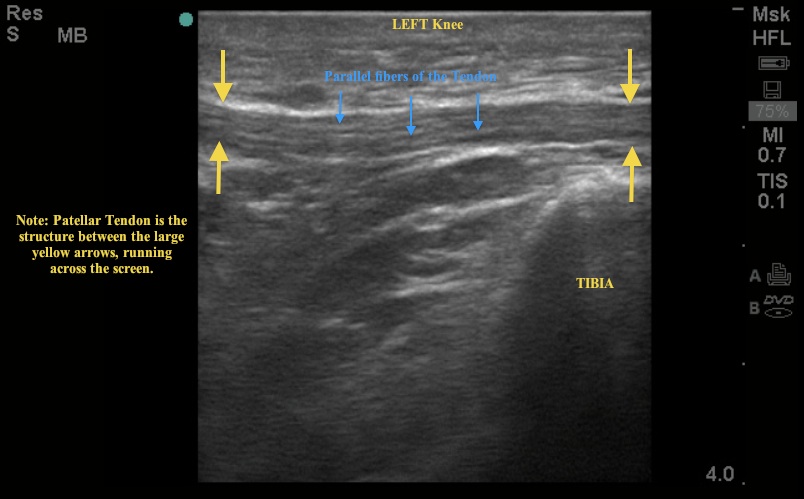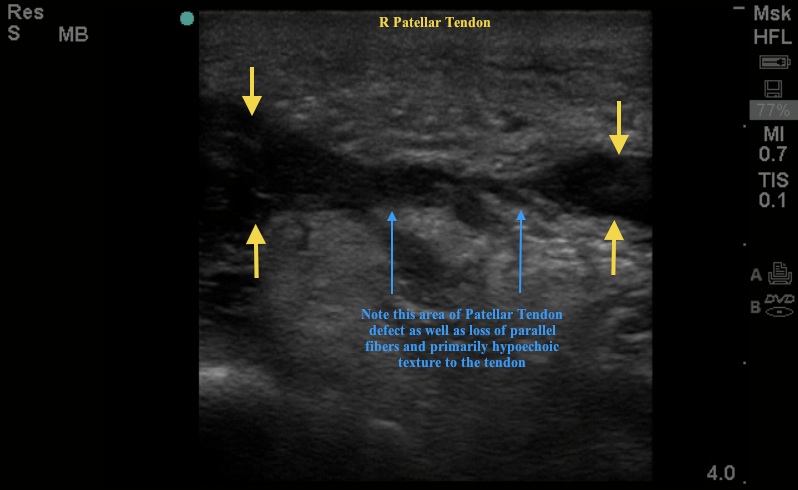The patient, a 47 yo M, came to the ED at GMH with a chief complaint of lower extremity weakness, unsteady gait, and limited mobility. The patient fell onto his knees approximately 4 weeks prior, went to a local ER due to the pain, and was sent home after normal XRs. For the past few weeks, he noted increasing difficulty ambulating and limited gait. MSK exam showed preserved bilateral lower extremity strength with the exception of severely limited RIGHT knee extension. Using bedside ultrasound Dr. Beck confirmed her suspicion – a patellar tendon rupture.
The superficial location makes sonographic identification of the patellar tendon rather straightforward: linear probe, longitudinal orientation, indicator toward the head, with subtle fanning movements below the patella. One should be able to see the bundle of longitudinal parallel layers with fine hyperechoic lines in a normal, uninjured tendon (Image 1). Real-time knee extension under direct visualization may also help confirm the visualization of the tendon.
Image 1: Left Patellar Tendon

In the setting of patellar tendon rupture, localized edema and inflammation occur. The added fluid changes the sonographic appearance of the tendon (Image 2). Note the loss of the longitudinal fibers, the tendon defect, and the significant edema compared to Image 1. You can also appreciate the proximal and distal ends of the tendon.
Image 2: Right Patellar Tendon

The patient was placed in a long leg brace, given crutches, and referred to orthopedics for definitive management.
January 2012

